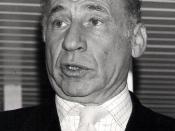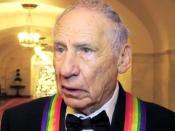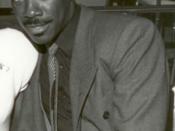"The world is a tragedy to he who feels and a comedy to he who thinks," was one of the main sentiments voiced by Dramatist Mark Cole--he tied it into irony and tried to illustrate how the same event, given a change in time or perspective, can seem very different.
The first thing I thought of when I heard this was The Comedian.
In Alan Moore's brilliant graphic novel Watchmen, cited in Wizard: The Comics Magazine as the best American comic of the Twentieth Century, the plot begins with the death of a costumed vigilante (read: "super-hero") called The Comedian. Watchmen is to comic books what Citizen Kane is to cinema in more ways than one--besides having the reputation of being the best piece of American sequential art ever produced (certainly the best of the superhero genre), Watchmen mirrors Citizen Kane in its structure--starting with the death of a central character and working backwards.
At the start of the book, it's hard to sympathize with The Comedian--but though he is not the main character of the story, it's still in many ways the tale of his development. We begin to see that "The Comedian" started out as a gimmick and a cool costume idea, but that after volunteering for special duty during the war in Vietnam and returning to a country where not only were veterans not appreciated, but where superheroes had been formally outlawed in his absence, "The Comedian" was a bitter man haunted by the ironies of the universe.
There are several monologues in the story, all ending in "It's all so damn funny," and not a one of which is particularly funny to the reader. The Comedian throughout the story is depicted as a character who goes from one who thinks (he thinks the world is just...


